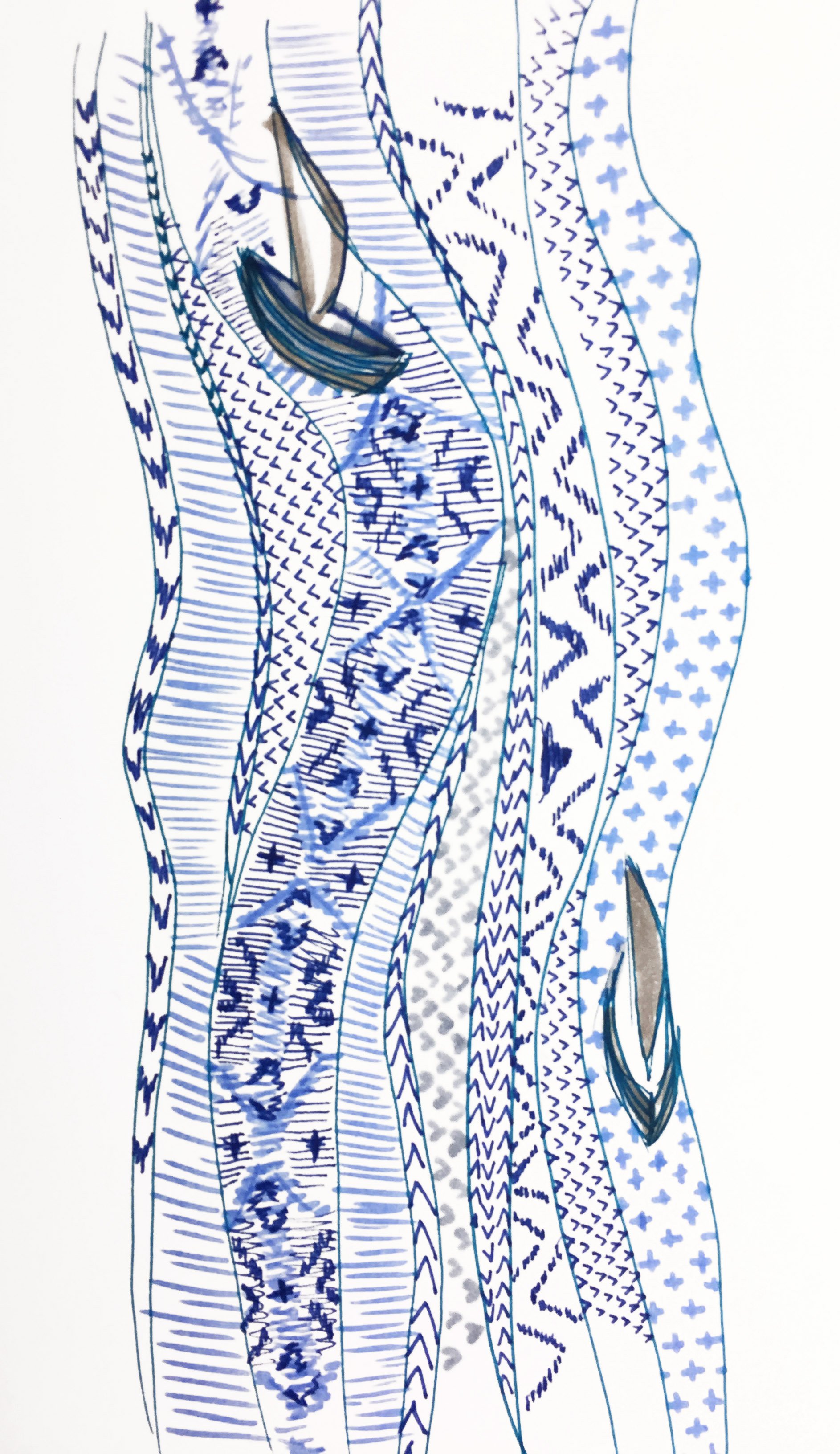Considering the Sea
So far reading about stranded knitting, Fair Isle knitting, motifs and patterns- I've come across the connection of sea trade. Places that seem so distant from one another are connected through pattern by way of the sea.
Map illustration from Alice Starmore's Book of Fair Isle Knitting (p.11) showing how Shetland was connected to other knitting rich areas of Northern Europe by sea trading routes.
I thought that this part of the history of this design style was an interesting place and inspiration to start sketching. How does one capture the various trading routes/lanes bringing patterns to and fro?
Sketches from my sketchbook photos taken by Aleks Byrd, ©Aleks Byrd 2017.
I began sketching lines that mimicked ripples or water and waves as a framework to then piece varying patterns within and places ship shapes in various stripes. I am enjoying the organic flow and movement that the ripple and wave like line patten evokes. This reminds me of a photo I took at an exhibition a few years back of ornamentation in Estonian pattern in design. The photo is of the display of traditional woven belts that were hung from the ceiling at varying depths. It is like the concept of creating layered striped patterns that I have begun exploring in my sketch (above left), in which the patterns work and flow harmoniously together while reflecting variations in similar motif designs in keeping with my research on reinterpretation of patterns place to place.
Display of traditional woven belts (Estonian: vöö) at ornaMENTAALNE exhibition Tallinn Art Hall, Tallinn, Estonia June 28-July 27, 2014, photo taken by Aleks Byrd
Reference
STARMORE, Alice., 2009. Alice Starmore's Book of Fair Isle Knitting. Mineola ,New York: Dover Publications.




